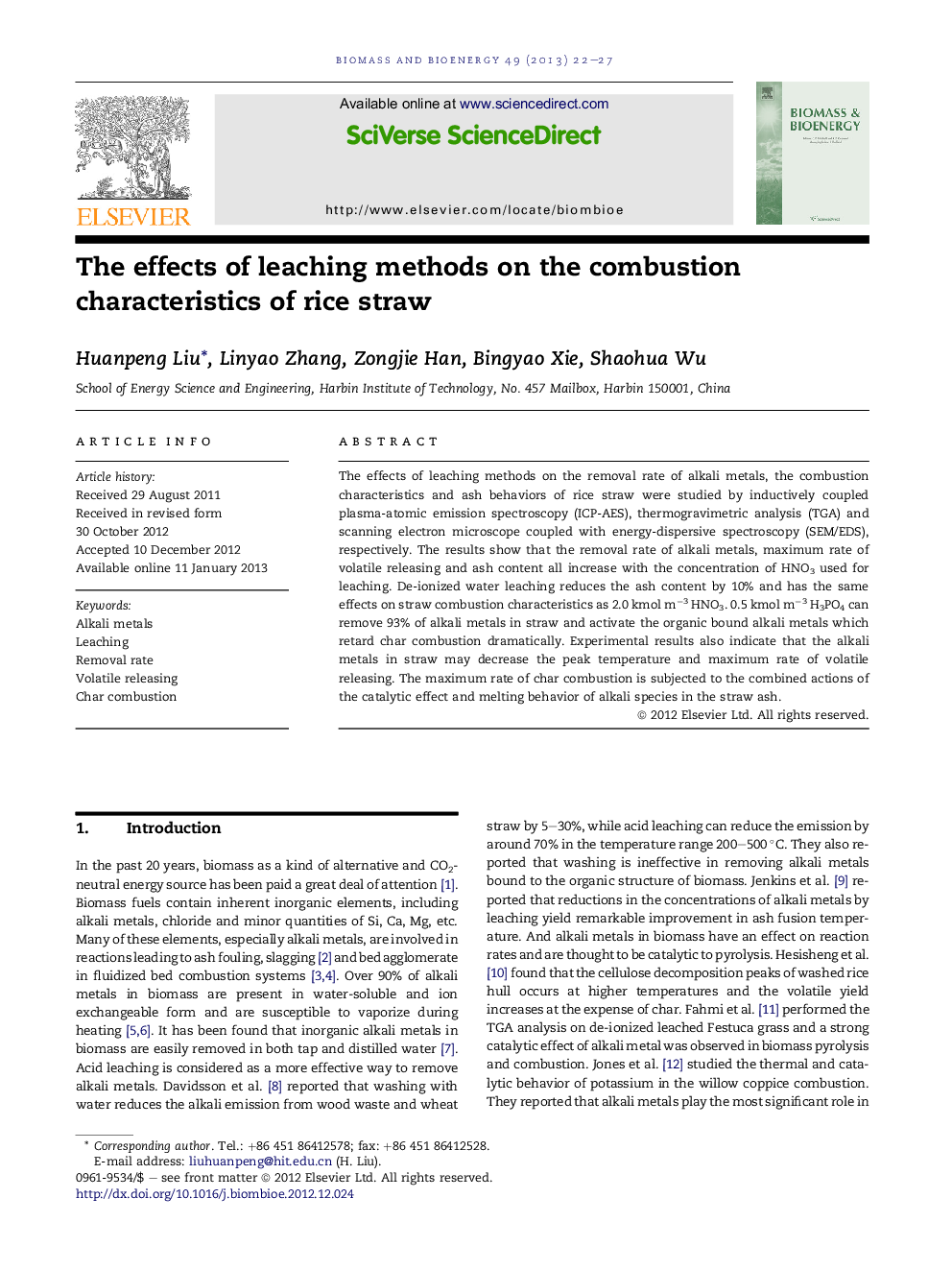| Article ID | Journal | Published Year | Pages | File Type |
|---|---|---|---|---|
| 677220 | Biomass and Bioenergy | 2013 | 6 Pages |
The effects of leaching methods on the removal rate of alkali metals, the combustion characteristics and ash behaviors of rice straw were studied by inductively coupled plasma-atomic emission spectroscopy (ICP-AES), thermogravimetric analysis (TGA) and scanning electron microscope coupled with energy-dispersive spectroscopy (SEM/EDS), respectively. The results show that the removal rate of alkali metals, maximum rate of volatile releasing and ash content all increase with the concentration of HNO3 used for leaching. De-ionized water leaching reduces the ash content by 10% and has the same effects on straw combustion characteristics as 2.0 kmol m−3 HNO3. 0.5 kmol m−3 H3PO4 can remove 93% of alkali metals in straw and activate the organic bound alkali metals which retard char combustion dramatically. Experimental results also indicate that the alkali metals in straw may decrease the peak temperature and maximum rate of volatile releasing. The maximum rate of char combustion is subjected to the combined actions of the catalytic effect and melting behavior of alkali species in the straw ash.
► The maximum rate of volatile releasing increases with the concentration of HNO3. ► De-ionized water has the same effects on straw combustion characteristics as 2.0 kmol m−3 HNO3. ► 0.5 kmol m−3 H3PO4 can remove 93% of alkali metals in straw. ► H3PO4 activate organic bound alkali metals and retard char combustion dramatically.
